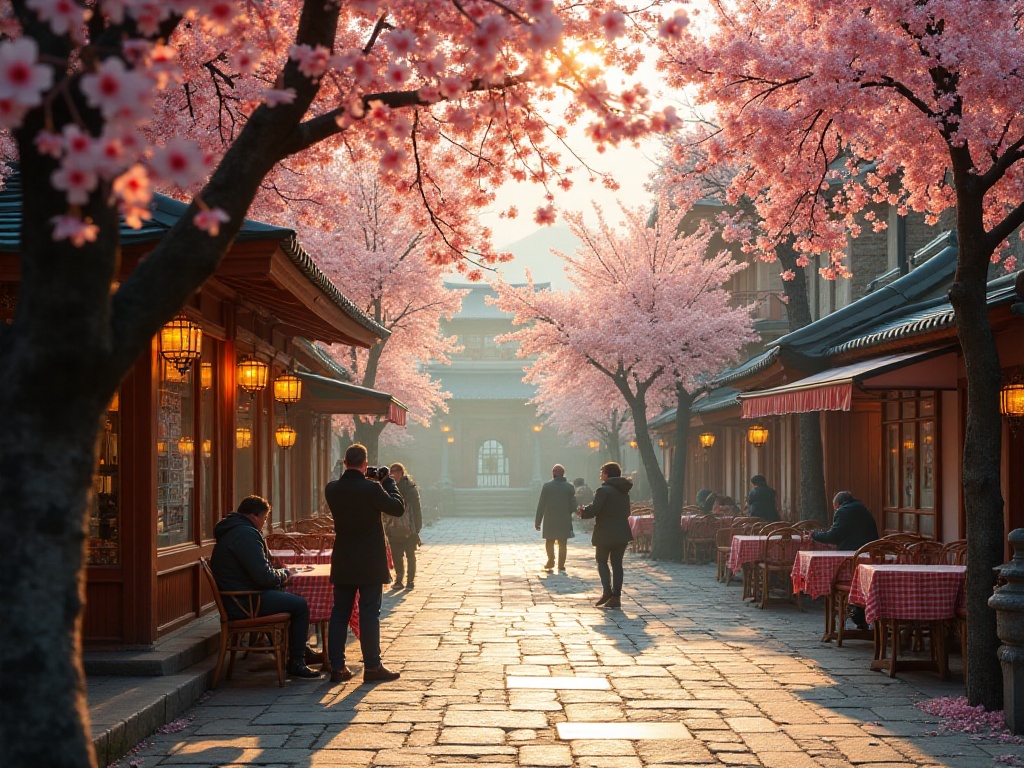Hey, dear friends. As a seasoned traveler who has been on the road for over a decade, I deeply understand that travel is much more than just checking off tourist spots and posting photos on social media. Today, I'd like to share with you how to make your travels more interesting and meaningful.
To be honest, I also started as a "tourist spot checker," feeling compelled to photograph every popular location and post extensively on social media to prove "I was there." But as I traveled more, I gradually realized this approach to travel was quite hollow - after returning home, I had nothing but photos and few meaningful memories. Real travel should be about experiencing a place's culture, history, and human spirit, not rushing from one spot to another like checking items off a list.
I remember once in Hanoi, Vietnam, I abandoned my planned itinerary and spent an entire day sitting at a small café by Hoan Kiem Lake, watching locals exercise, walk their dogs, and play chess, experiencing the city's most authentic daily life. Though I didn't visit any tourist attractions that day, it became the most memorable day of my entire trip.
So today, I want to share some travel experiences and insights I've accumulated over the years, hoping to help you discover more unique experiences in your next journey.
Did you know? Many people pack their travel schedules so full that they end up exhausted once they arrive. My advice is don't plan every minute rigidly. Leave some room for exploration - you might encounter unexpected wonderful experiences.
I remember my first trip to Japan - my itinerary was packed from 7 AM to 9 PM, trying to squeeze in every Tokyo attraction possible. By the second day, I was completely exhausted, with no energy to continue sightseeing, just wanting to lie in the hotel bed. That experience taught me that travel isn't about completing tasks, but enjoying the process.
Now my habit is to plan only 1-2 must-visit places each day, leaving the rest of the time open. For example, I might visit a museum in the morning, then leave the afternoon completely free - perhaps lingering in a nearby café, exploring side streets, or sitting on a park bench observing local life. This feeling of not being bound by an itinerary is travel's greatest freedom and joy.
For instance, last year in Kyoto, I had planned to visit Kinkaku-ji, but heard about a small temple nearby hosting a traditional matcha tea ceremony. I changed plans to attend this event and ended up meeting a tea master with 40 years of experience, who shared many fascinating stories. Such experiences would be missed if following a strict itinerary.
The tea master told me that the tea ceremony isn't just about brewing tea - it's a life attitude, a pursuit of simple beauty. He taught me how to appreciate the glaze variations on tea bowls, how to sense the tea's layers in your mouth, and how to find moments of tranquility in busy life. These subtle experiences and insights are something no travel guide can provide.
Regarding pre-trip preparation, I also suggest doing moderate research. Note the word "moderate." Some people spend enormous time studying guides, planning every detail. But I think leaving room for the unknown and surprises is travel's true charm.
I usually learn the basics about a destination - climate, cultural taboos, transportation methods, and other essential information. Then I deeply research a few places that interest me most, rather than trying to know everything about every attraction. This ensures the trip goes smoothly while not constraining experiences with too many preset expectations.
Another important point is to watch for local events or festivals. Many people only focus on permanent attractions while overlooking temporary cultural events. For instance, I once visited Mexico during the Day of the Dead. Watching locals dress up, place food, flowers, and photos at their relatives' graves, "spending time" with deceased loved ones - this unique understanding of life and death deeply moved me. If I hadn't coincidentally arrived during this festival, I might never have understood Mexicans' peculiar yet beautiful attitude toward death.
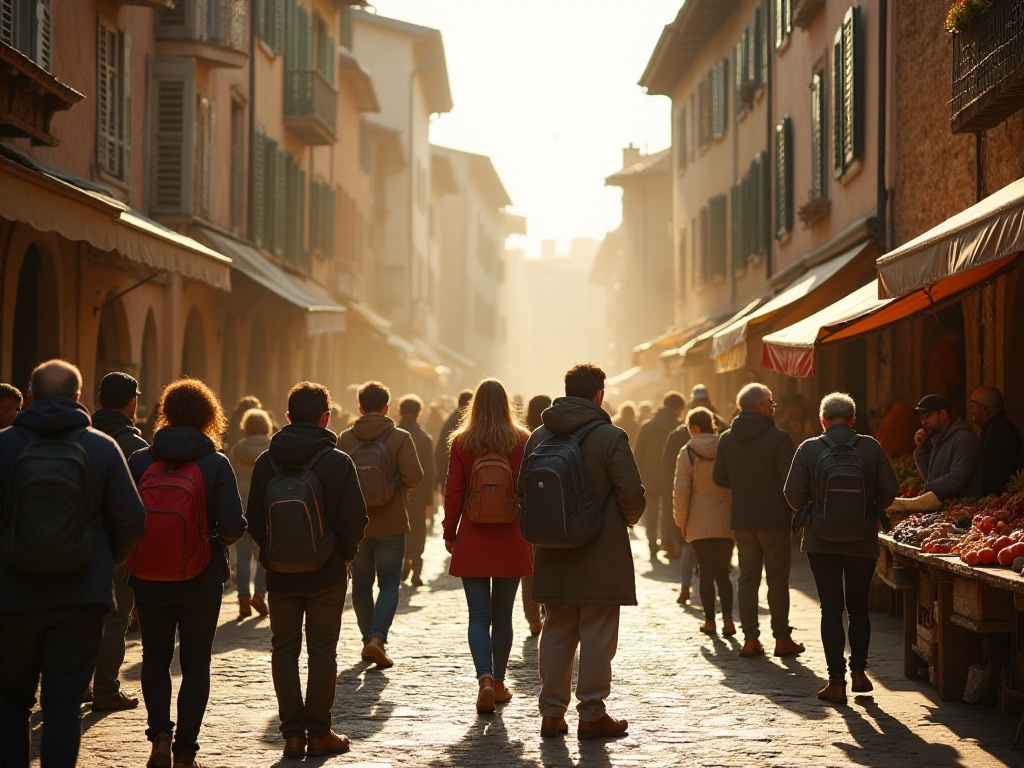
When it comes to packing, I have a unique "rule of thirds": divide everything you want to bring into three piles, then discard two-thirds. Why? Because I've found that in every trip, I actually use less than a third of what I planned to bring.
When I first started traveling, I always worried about not having enough of this or that, resulting in dragging an overweight suitcase everywhere. I remember once in Thailand, I brought seven or eight sets of clothes, three pairs of shoes, various skincare products and electronic devices, but ended up wearing the same shorts and T-shirt most of the time because it was too hot - other clothes never had a chance to be worn.
Later I gradually learned that for trips under 7 days, 3-4 sets of clothes are actually enough. First, you can wear them multiple times, and second, if you really need something, buying it locally both solves the problem and provides a local souvenir.
Clothing choice is also important. I especially recommend choosing versatile and practical items. For example, a good windbreaker can both protect from rain and block wind, useful in various weather conditions. A pair of black quick-dry pants works for both fancy restaurants and hiking without looking out of place.
Besides clothing, I believe the following items are travel essentials:
First is a good backpack. Don't underestimate this common equipment - a suitable backpack can greatly enhance your travel experience. It should be lightweight, have reasonable space distribution, and preferably be waterproof. My current backpack has accompanied me through over 20 countries, and though somewhat faded, remains my most trusted travel companion.
Second is a comfortable pair of walking shoes. Whether strolling through cities or hiking mountains, shoe comfort directly affects your experience. I once wore ill-fitting shoes in Paris and got blisters after a day of walking, making the next few days miserable. So never sacrifice comfort for looks, especially during intensive travel.
Third is a water bottle. Bringing your own water is both environmentally friendly and saves money on bottled water. Many European cities have drinking fountains where you can refill anytime.
Finally, power banks and plug adapters. Having your phone die in an unfamiliar environment is very anxiety-inducing. I always ensure my power bank has enough charge to fully charge my phone at least twice. Different countries have different socket standards, and a universal adapter solves many problems.
As for other items, my advice is don't bring them if you don't have to. Items like shower gel and shampoo are provided by most hotels, or can be easily bought locally. Books can be replaced with e-books to reduce weight. Skincare products can be travel-sized or transferred to small bottles.
One more tip is to leave some space in your suitcase for souvenirs or local products you might buy for the return trip. Nothing is more frustrating than having a full suitcase but wanting to buy more items to take home.
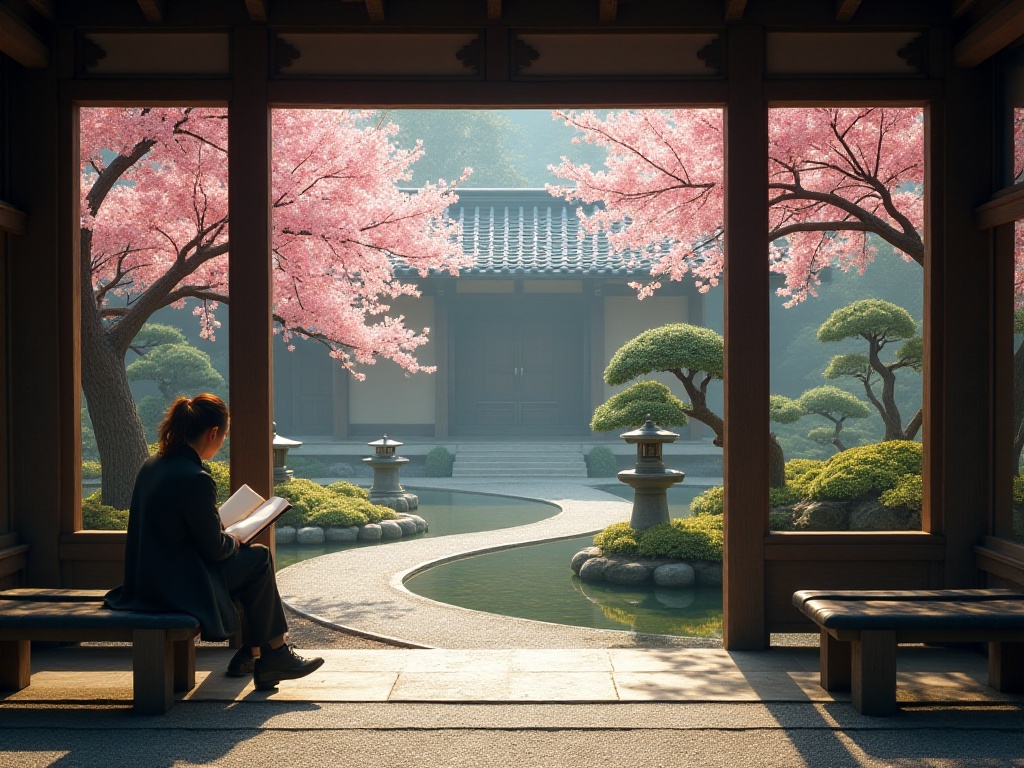
Many people think travel is extremely expensive, but that's not necessarily true. After years of experience, I've found the key to saving money is "living like a local."
Let's start with flights. Everyone knows booking early is cheaper, but there are patterns to how far in advance to book. From my experience, international flights are usually most economical when booked 2-3 months ahead, while domestic flights are best about 1 month ahead. Additionally, flights departing Tuesday through Thursday are usually cheaper than weekend flights.
Here's another tip: use your browser's incognito mode when searching for flights. Many airlines and booking sites track your search history through cookies, and might raise prices if they notice you searching the same route multiple times. Using incognito mode avoids this.
For accommodation, besides common hotels and hostels, I recommend trying local guesthouses or family-run inns. These places are usually affordable and provide more authentic experiences. In guesthouses, hosts often enthusiastically recommend local favorite spots - valuable information you won't find in travel guides.
For dining, many tourists like eating at restaurants near attractions. But did you know? Just walking ten minutes into side streets often leads to restaurants half the price with more authentic flavors. In Tokyo, I often go to izakayas where office workers gather, getting both affordable food and experiencing the most authentic after-work culture.
I remember once in Rome, I avoided restaurants near the Spanish Steps and found a small restaurant in Trastevere frequented only by locals. The owner didn't speak English and the menu was only in Italian, but using translation apps and body language, I ordered a traditional Roman pasta, Cacio e Pepe. The delicious flavor created from simple ingredients remains unforgettable. And the entire meal cost just one-third of tourist area restaurant prices.
For transportation, I suggest using public transit whenever possible. In many cities, a transit card offers unlimited use of buses and metros for several days, more economical than single tickets or taxis. In London, for example, the Oyster card has a daily cap around 7 pounds - you save money after just three metro rides.
If your schedule allows, walking is also a great way to explore cities. In Venice, I mostly walked, saving water bus fares while discovering many hidden beauties in small alleys that hurried transit passengers never see.
For accommodation, I suggest choosing guesthouses with kitchens. In Venice, hotels easily cost over 1000 per night, but I found a local apartment with both good location and price less than half of hotels. Best of all, I could buy fresh ingredients from local markets and cook myself, saving money while experiencing local lifestyle.
I remember in that Venice apartment, one morning I went to the nearby Rialto market to buy fresh seafood, vegetables, and bread, then returned to make a hearty breakfast. Sitting on the balcony, viewing the distant bell towers and churches, listening to gondoliers' songs from the canal below - that feeling was far more wonderful than staying in a luxury hotel.
Additionally, many cities offer free or low-cost experiences. Many museums have free days, some cities provide free walking tours, and many churches and historic buildings are free to enter. In Barcelona, I found many Gaudi-designed building exteriors already impressive - you don't necessarily need to pay to tour the interiors.
Finally, if you have enough time, working holiday or volunteer programs are great ways to both save money and gain deep experiences. I once worked two months on an Australian farm, helping care for animals and harvest fruit in exchange for room and board. That experience helped me make many friends and gain the most authentic understanding of Australian farm life.
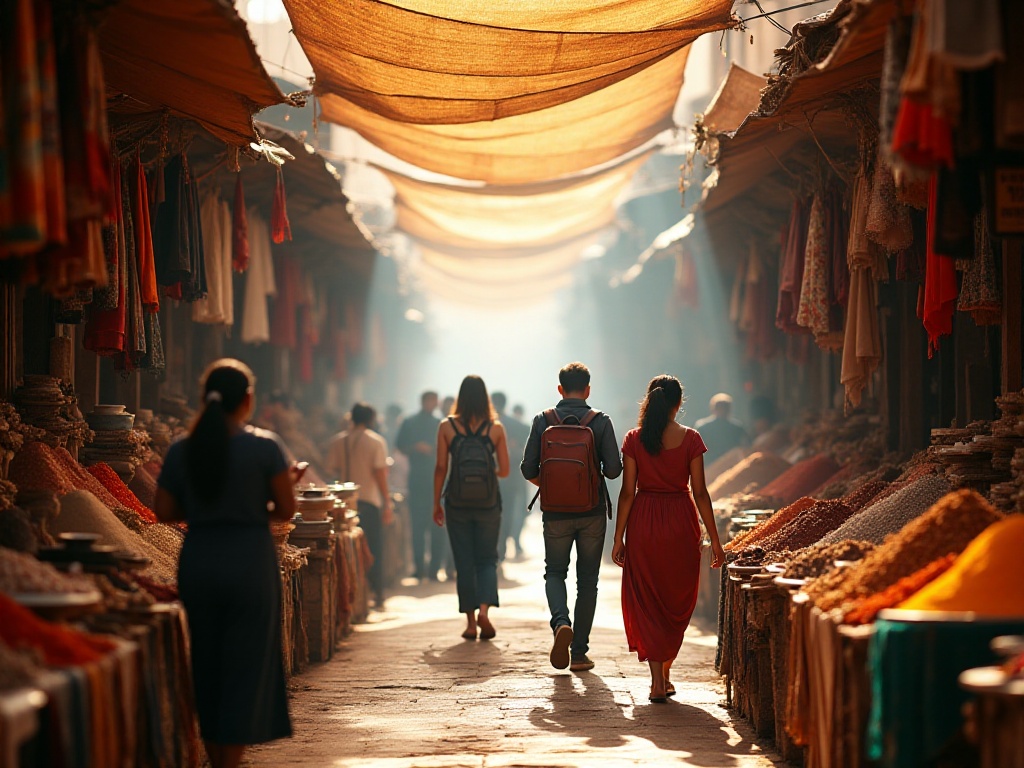
The most interesting part of travel has to be interactions with locals. I remember in Turkey, I deliberately learned a few Turkish phrases. Though my pronunciation wasn't great, locals were very enthusiastic seeing me try to communicate in their language. Once in a café, just because I could say "hello" and "thank you," the owner specially taught me how to brew authentic Turkish coffee.
This Turkish café owner, Ahmet, was over 60 and had run this small shop for thirty-plus years. When he discovered my interest in Turkish coffee, he excitedly brought out his special copper pot (cezve) and demonstrated the traditional brewing method. He told me good Turkish coffee should have a thick layer of foam, and the coffee grounds should be ground extremely fine, almost like flour. More interestingly, he taught me how to read fortunes from coffee grounds at the bottom of the cup - a unique Turkish tradition. Though I don't believe in such divination, participating in this process, listening to him "interpret my future" in half-English half-Turkish, was an invaluable cultural experience.
There are many similar experiences. In Marrakech's market, a carpet merchant invited me for tea - we chatted for over two hours, from carpet-making techniques to Morocco's historical changes, and he eventually invited me to dinner at his home where I met his whole family. Such opportunities to deeply experience local life can't be provided by any luxury tour group.
Learning some basic local language really can add much joy to your travel. Besides basic greetings, I suggest learning some practical phrases like "how much is this," "that's too expensive, can you lower the price," "where is the bathroom," etc. Even if your pronunciation isn't standard, locals can usually understand and will be friendlier because of your effort.
Besides language, understanding some local customs is also very important. For example, in Japan, remove shoes before entering residential areas; in Middle Eastern countries, don't pass food or items with your left hand as it's considered unclean; in India, head shaking doesn't always mean no - sometimes it indicates yes. Understanding these details helps avoid cultural conflicts and shows locals your respect.
I especially recommend participating in local volunteer activities. In Nepal, I joined a project teaching English to children. Though I only stayed a week, those children's innocent smiles still warm my heart when I remember them. Such experiences gave me understanding of the country far beyond mere sightseeing.
That Nepal volunteer project was in a small village outside Kathmandu. The school conditions were very basic - children of different ages crowded in one classroom with limited teaching materials. But the children's desire to learn was extraordinarily strong. Every morning when I arrived at school, a group of children would surround me, eager to learn new words.
There was a smart little boy named Ramesh who memorized all the English words I taught in just three days. On the last day, he said to me in stiff but correct English: "Teacher, thank you. I will study hard. One day I will visit your country." At that moment, I understood what education means to these children - it's their bridge to a broader world.
Similar volunteer opportunities are actually numerous, some through formal organized projects, others spontaneous help. For example, in a Cambodian village, I met an elderly mechanic and spent a day learning how to repair motorcycles from him. He didn't speak English and I didn't speak Khmer, but through gestures and simple words, we managed effective communication. That day, I not only learned basic motorcycle repair skills but also understood many details about Cambodian village life.
Experiencing local daily life is also part of deep travel. For example, shop at supermarkets where locals shop rather than tourist area stores, go to public bathhouses rather than hotel pools, take public transit rather than tour buses. In Japan, I deliberately went to a local public bathhouse (Sento) to experience traditional bathing culture; in Istanbul, I went to a local barbershop - though the barber didn't speak English, that haircut experience remains impressive.
Additionally, I've found participating in local festivals or events is an excellent way to understand culture. In Valencia, Spain, I happened to catch Las Fallas festival, watching elaborate wooden puppets dozens of meters tall being uniformly burned on the last day - that spectacle and its symbolism of "letting go of the past, welcoming new life" deeply impressed me. During India's Diwali festival, lighting oil lamps with local families, releasing sky lanterns, sharing sweets, experiencing that atmosphere of nationwide celebration was an ineffably wonderful experience.
Finally, don't fear traveling alone. Many worry about language barriers, safety issues, etc., but solo travel often brings more opportunities to interact with locals. When you're alone, you're more likely to be "adopted" by locals and more easily integrate into the local environment. In my experience, I've made far more friends during solo travel than group travel.

While everyone likes taking photos with phones now, I still habit of carrying a small notebook. Why? Because some experiences can't be captured in photos. Like the smell from street-side shops, a casual comment from a passerby, or a moment's feeling.
In Marrakech's market, the air was filled with a mix of mint tea, spices, and leather - something no photo could capture. In a small café in Paris's Montmartre, an elderly person at the next table told me "youth is precious, see more of this world while you can," making me think for a long time. By the Ganges in Varanasi, India, watching people bathe and pray in the river, that unique and calm understanding of life and death required words to express such complex feelings.
My travel notes usually divide into several parts: location descriptions, people records, sensory experiences, and personal feelings. Location descriptions record places I've been, not just attraction names but also atmosphere, architectural style, and other details; people records write down interesting people I've met and our interactions; sensory experiences record various sounds, smells, tastes that moved me; personal feelings are the most subjective part, recording my emotional changes and thoughts.
In Marrakech, Morocco, I noted down the smells of various spices in the market and interesting stories told by locals. Now when I open my notebook, those details seem right before my eyes.
I remember writing in my notes: "Today bought a small bag of saffron in Jemaa el-Fnaa square, from a white-haired but spirited old man named Hassan. He told me real saffron should be dark red, slowly releasing golden yellow color in water. He also taught me how to distinguish real from fake saffron - put it on your tongue tip, if there's a slight metallic taste, it's real. Hassan said his family has been in the spice business for five generations, and he started helping in the market at age 8." Such details can't be recorded in photos, and it's these details that make travel three-dimensional and rich.
Speaking of photos, I'm not against taking them, but suggest experiencing mindfully while photographing. Sometimes we focus so much on framing and composition that we neglect the beauty before us. My suggestion is to first put down the camera, appreciate with your eyes and heart, then consider whether to photograph for memory.
Additionally, there are some photography tips to share. For example, photograph early for good light and fewer people, capturing purer scenery; try different angles, like crouching or climbing higher, seeking fresh perspectives; focus on details - sometimes a door, window, or lamp can represent a place's character; most importantly, don't just photograph scenery, but also people, including locals and your travel companions, because it's people that give travel its warmth.
Besides notes and photos, I also like collecting small items as mementos, like tickets, admission stubs, leaves, postcards, etc. These seemingly ordinary small things each have a story behind them. I have an old shoebox full of "treasures" collected over the years: a maple leaf from Kyoto's Golden Pavilion, a Paris metro ticket stub, a small stone from the Sahara Desert. Every time I sort through these items, they evoke many beautiful memories.
Additionally, I recommend trying drawing as a recording method, even if you're not an artist. Simple sketches or watercolor studies can make you more focused on observing your surroundings, discovering details that might otherwise be overlooked. I remember in Santorini, Greece, I spent an afternoon sitting on a cliff trying to draw the blue and white buildings and azure Aegean Sea. Though the result was amateur, that afternoon's sunlight, sea breeze, and tranquility remain forever in my memory through that drawing.
Social media is also a way to record travel, but I suggest not letting it occupy too much travel time. Some people care too much about social media likes, even waiting hours in line or repeatedly reshooting for a "perfect" photo. This often affects authentic experience, turning travel into a social performance. My approach is to organize and post photos after returning to lodging in the evening, using daytime fully for experiencing and feeling.
Finally, post-trip organization is also important. I paste tickets, flyers, and other items collected during travel into my notebook, adding photos and text descriptions to make a complete travel journal. Though this process seems time-consuming, it makes travel memories more systematic and lasting. Sometimes opening a travel journal from years ago, forgotten details resurface, making me feel like I'm experiencing the journey again.
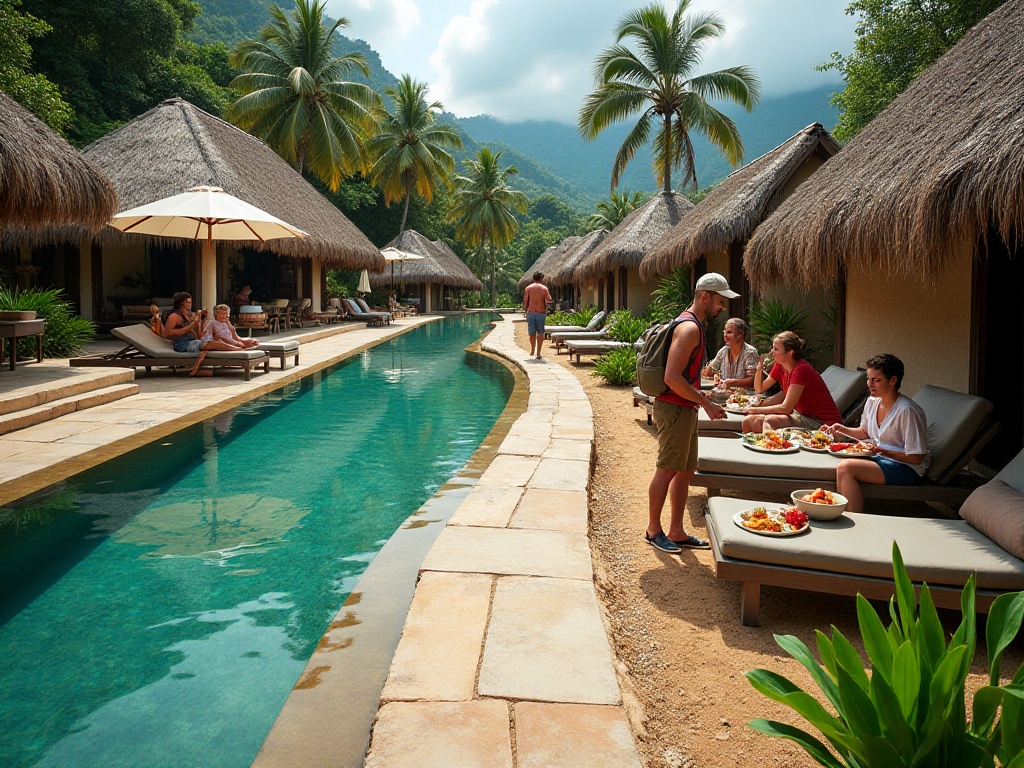
Various accidents and unexpected situations are inevitable in travel - how to gracefully handle these challenges is also an important part of travel experience.
First, for flight delays or cancellations, staying calm is paramount. Once at Manila Airport in the Philippines, I encountered widespread flight cancellations due to a typhoon. The airport was chaotic, with many people loudly protesting or anxiously queuing. I chose to first find a quiet corner, contact the airline's customer service while searching for other possible travel options. Eventually I found a solution earlier than those queuing at counters - transferring to an early flight the next day, with airport-nearby accommodation arranged by the airline.
Language barriers are also a common problem. I encountered situations of absolutely no English speakers in rural Japan. In such situations, translation apps are your best friend. But more important is maintaining a smile and patience, using body language to assist communication. Human communication far exceeds language - a sincere smile and friendly attitude often cross language barriers.
Health issues may be the most worrying in travel. I suggest bringing a basic medical kit wherever you go, including common medications, band-aids, disinfectants, etc. Meanwhile, purchasing reliable travel insurance is wise. When I sprained my ankle hiking the Inca Trail in Peru, thankfully travel insurance covered not only medical expenses but also arranged special transport back to Lima.
Loss or theft of belongings is also common in travel. My advice is to photocopy or photograph important documents like passports and credit cards, storing copies in the cloud; distribute cash and valuables in different places; be especially vigilant in crowded places. I remember almost being targeted by pickpockets in Barcelona, fortunately having received advance warning from local friends.
 Previous
Previous


